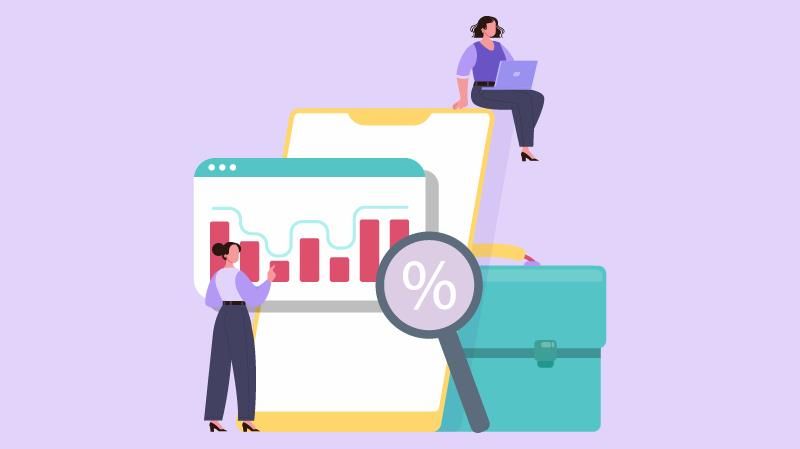Employee Surveys: A Complete Guide to Building a Listening Culture

A Global Employee Recognition and Wellness Platform
"Organizations that actively survey their employees are 23% more profitable, 18% more productive, and 70% more likely to have employees who are thriving." — Gallup
So, how do they achieve these impressive outcomes? The answer lies in employee surveys.
Once viewed merely as tools for data collection, employee surveys have evolved into powerful instruments for fostering a culture of listening and continuous improvement within organizations. They're not just about gathering feedback, they're about transforming that feedback into actionable insights that strengthen the bond between management and employees.
In this guide, we'll delve into the pivotal role of employee surveys in shaping HR strategy. We'll explore the various types of surveys, discuss how to effectively interpret the results, and provide best practices for translating feedback into meaningful action. By the end, you'll understand how to leverage employee surveys to enhance engagement, drive performance, and ultimately, contribute to your organization's success.
Types of Employee Surveys (With Examples)

Here are 12 types of surveys that can give you real-time insights, helping you proactively address issues and improve employee experience:
1. Employee Engagement Survey
-
Why It’s Crucial: Engagement is the bedrock of retention, productivity, and morale. But engagement levels don’t stay static, they shift over time. Frequent engagement surveys help you track these changes and identify issues before they snowball. Unlike large annual surveys, regular engagement check-ins give you continuous insights into employee morale and motivation.
-
When to Use: Conducted monthly or quarterly, with pulse surveys in between, to track real-time sentiment and track trends after organizational changes.
-
What You’ll Gain: Insights into overall employee commitment, satisfaction, and alignment with the company’s mission. It helps you pinpoint specific areas like leadership, workload, or recognition that need attention.
-
Example Question: “How likely are you to recommend this company to others as a great place to work?”
-
Why It Works: With more frequent surveys, you can keep the pulse on engagement without overwhelming employees with long surveys.
Think you know how engaged your team is? Read Our The Ultimate Guide to Employee Engagement Surveys: Design, Deliver, and Act with Impact
2. Onboarding Survey
- Why It’s Crucial: The first 90 days are critical in shaping an employee’s perception of your company. A positive onboarding experience improves retention, while a negative one can lead to early attrition. Ongoing feedback throughout the onboarding process lets you spot issues quickly and adjust your onboarding process accordingly.
According to a report 70% of employees who had exceptional onboarding experiences say they have "the best possible job." These employees are also 2.6 times as likely to be extremely satisfied with their workplace and consequently, far more likely to stay.
-
When to Use: Administered bi-weekly or monthly during the first three months of employment. This frequency ensures that new hires feel supported and heard during their critical first few months.
-
What You’ll Gain: Early identification of onboarding pain points, such as lack of role clarity, inadequate training, or poor integration into team culture.
-
Example Question: “How confident do you feel in your ability to succeed in your role after X weeks of onboarding?”
-
Why It Works: Regular surveys during onboarding help you understand how well employees are settling in, making it easier to provide timely support.
Stop Losing Great Hires to poor Onboarding, Ask the Right Questions: Employee Onboarding Surveys: 60 Questions That Help Retain Top Talent
3. DEI (Diversity, Equity, and Inclusion) Survey
-
Why It’s Crucial: Diversity and inclusion efforts are most effective when measured regularly. DEI surveys help you understand how employees feel about inclusivity and whether your DEI initiatives are making an impact. A quick, ongoing check-in can reveal changes in sentiment, ensuring your organization is truly fostering an inclusive environment.
-
When to Use: Quarterly or semi-annually to track how well diversity, equity, and inclusion practices are resonating with employees over time.
-
What You’ll gain: Insight into employees' experiences with inclusivity, potential biases, and where the company could improve its DEI initiatives. You’ll also be able to measure how comfortable employees feel within the company.
-
Example Question: “Do you believe that people of diverse backgrounds have equal opportunities for advancement within the company?”
-
Why It Works: Regular surveys allow you to assess the impact of DEI initiatives continuously, rather than once a year, ensuring you remain responsive and proactive.
What separates inclusive workplaces from the rest? Learn More: What is DEIB in the Workplace? Best Practices, Importance, and Challenges
4. Pulse Survey
-
Why It’s Crucial: Pulse surveys are the best way to track real-time sentiment across your organization. They’re short, specific, and sent out frequently, making them ideal for gathering quick insights into employee concerns or engagement levels. Pulse surveys let you detect issues like burnout, dissatisfaction, or disengagement before they become major problems.
-
When to Use: Weekly or bi-weekly, allowing you to track changes in engagement, morale, and satisfaction quickly and regularly. They’re also great for monitoring after specific events, like company changes or policy shifts.
-
What You’ll Gain: Immediate feedback on employee mood, engagement, and any concerns that need attention. This allows for timely interventions.
-
Example Question: “How satisfied are you with your current workload?”
-
Why It Works: The short, frequent nature of pulse surveys helps avoid overwhelming employees while continuously gathering valuable feedback.
Don't wait for annual surveys - see why: Pulse Surveys: A Complete Guide to Real-Time Employee Insights
5. 360-Degree Feedback Survey
-
Why It’s Crucial: Feedback from peers, subordinates, and managers offers a comprehensive view of an employee’s performance, development, and leadership potential. Rather than waiting for annual reviews, ongoing 360-degree feedback provides consistent, well-rounded insights that foster continuous improvement.
-
When to Use: Administered quarterly or semi-annually, especially for high-potential or leadership-track employees.
-
What You’ll Gain: A clear, balanced view of an employee’s performance, leadership abilities, and interpersonal skills, helping identify areas for improvement and opportunities for growth.
-
Example Question: “How effectively does this person collaborate with others across departments?”
-
Why It Works: Regular feedback helps employees grow continuously and ensures performance discussions are based on fresh data, not outdated perceptions.
Discover what makes 360 feedback effective: What is 360 Degree Feedback? Benefits, Best Practices, Alternativesure
6. Job Satisfaction Survey
-
Why It’s Crucial: Employee satisfaction is a key indicator of retention and engagement. While annual surveys capture this, frequent job satisfaction surveys give you ongoing insights, so you can address concerns before they lead to disengagement or attrition.
-
When to Use: Conducted every 2-3 months to ensure job satisfaction stays high across teams, and after significant changes such as promotions or new leadership.
-
What You’ll Gain: Real-time feedback on the factors affecting satisfaction, such as workload, career progression, compensation, and team dynamics.
-
Example Question: “How satisfied are you with the clarity of your job responsibilities?”
-
Why It Works: Frequent check-ins ensure you stay ahead of dissatisfaction, allowing you to act before issues become bigger concerns.
Discover what truly drives employee satisfaction: Unlocking Employee Happiness: A Guide to Satisfaction Surveys
7. Performance Review Survey
-
Why It’s Crucial: Feedback on the performance review process helps ensure the process is fair, constructive, and valuable to employees. Ongoing surveys after each performance review cycle allow you to adjust the process based on employee needs and feedback.
-
When to Use: Immediately after each performance review cycle or quarterly to track changes in feedback quality.
-
What You’ll Gain: Insights into how employees perceive the review process, whether they find it helpful, and if it’s motivating or discouraging.
-
Example Question: “Did the performance review feedback help you identify clear goals for your development?”
-
Why It Works: Timely feedback on performance reviews ensures the process evolves to meet employee expectations and improves over time.
Learn to boost performance through better feedback: Employee Performance Survey with 53 Sample Questions
8. Wellness Survey
-
Why It’s Crucial: Employee wellness is central to engagement and productivity. Frequent wellness surveys allow you to track how employees are feeling physically and mentally, so you can make adjustments to health programs or workplace conditions as needed.
-
When to Use: Conducted monthly or quarterly to monitor ongoing wellness levels and gather feedback on wellness programs.
-
What You’ll Gain: Insight into employees’ mental and physical well-being, highlighting areas where you can support their health and wellness more effectively.
-
Example Question: “How would you rate your overall well-being this month?”
-
Why It Works: Frequent wellness surveys give you ongoing data to act on, whether that’s improving your wellness programs or addressing emerging health concerns.
9. Employee Climate Survey
-
Why It’s Crucial: The climate of your workplace is an indicator of how employees are feeling on a broader scale. Employee climate surveys assess factors like team morale, inclusivity, trust in leadership, and overall work culture. They help identify systemic issues and set the stage for improvements in company culture.
-
When to Use: Typically done quarterly or semi-annually to track any shifts in organizational climate over time.
-
What You’ll Gain: Understanding how employees feel about their work environment and whether your company culture aligns with your values.
-
Example Question: “Are workplace policies (e.g., time off, performance reviews) applied consistently and fairly?”
-
Why It Works: Regular surveys provide you with up-to-date data on engagement levels, allowing for timely intervention when needed. This approach ensures you stay connected to employee sentiment throughout the year.
Never heard of climate surveys? Read why you need them: Employee Climate Survey with 30 Sample Questions
10. Change Management Survey
-
Why It’s Crucial: Change is inevitable, but how well your team adapts to it can make or break your success. Change management surveys help assess how employees are coping with change, whether it’s a new policy, leadership, or process. They ensure that change efforts are being communicated and received effectively.
-
When to Use: After any major organizational change—whether it’s a restructuring, new technology implementation, or a company-wide policy change.
-
What You’ll Gain: Insights into how employees are responding to change, and whether additional support or communication is needed to ensure smooth transitions.
-
Example Question: “How confident are you that the recent changes in the organization will lead to positive outcomes?”
-
Why It Works: Change management surveys help ensure that organizational changes are well-received by employees, and any barriers to acceptance are identified and addressed quickly.
Missing employee resistance signals? See what these surveys reveal: Change Management Surveys: Key Questions You Need to Ask
11. Sales Team Survey
Why It’s Crucial: Sales teams are the engine driving revenue, and their insights are invaluable for optimizing business strategy. A dedicated sales team survey helps HR and management understand the challenges salespeople face, from workload to compensation to support from leadership.
-
When to Use: Conducted quarterly or after key sales cycles to track satisfaction, challenges, and effectiveness of sales strategies.
-
What You’ll Gain: Feedback on sales goals, compensation, training, and leadership support, which can be used to improve team performance and satisfaction.
-
Example Question: “How satisfied are you with the tools and support provided to meet your sales targets?”
-
Why It Works: Regular surveys ensure you're addressing pain points within the sales team, improving their motivation, productivity, and retention. With frequent feedback, you can adapt quickly to any obstacles the team faces, ensuring they stay engaged and effective.
Learn how these surveys uncover sales team challenges: 50 Smart Sales Team Survey Questions
12. Employee Benefits Survey
- Why It’s Crucial: We all know how important benefits are, they’re often the make-or-break factor when employees decide whether to stay or go. That’s why it’s so important to regularly check in with your team to see if your benefits package is hitting the mark. What perks are they loving? Which ones are they overlooking? This survey helps you get the answers so you can fine-tune your offerings to keep your employees happy and engaged.
When employees feel cared for through benefits, they are 1.3 times more likely to be loyal and 1.2 times more productive (MetLife)
-
When to Use: Ideally, this should be done annually or semi-annually. You can also run it after any big changes to your benefits plan, like introducing a new health insurance option or adding a wellness program.
-
What You’ll Gain: Real, actionable insights into what your employees really care about when it comes to benefits—whether it’s flexible working hours, wellness perks, or retirement plans. Plus, you’ll find out where your benefits package might need a little polish.
-
Example Question: “How satisfied are you with the current benefits provided by the company?”
-
Why It Works: By frequently checking in on employee satisfaction with benefits, you can stay ahead of the curve and make sure your benefits package is always aligned with what employees value most. Happy employees are loyal employees, and the right benefits go a long way in showing your team they’re appreciated.
Wasting money on unused benefits? See what these surveys reveal Employee Benefits Surveys: Sample Questions to Enhance Your Benefits Strategy
Why Should You Use Multiple Survey Types?
Employee sentiment is complex. It’s not just about one questionor, one survey type, it’s about getting a broad, multifaceted understanding of what’s really going on in your organization. No single survey can capture every nuance of the employee experience, which is why it’s crucial to use multiple survey types. Each one gives you a unique lens through which to view employee engagement, satisfaction, and concerns.
The Power of Diversifying Survey Types
Here’s the thing—using only one survey type is like trying to solve a mystery with just one clue. Multiple surveys give you a variety of insights from different angles, which helps you see the full picture. You can’t effectively assess employee engagement without looking at onboarding, manager relationships, and career development all in one go. When you use a range of surveys, you can more accurately assess how employees are feeling at different stages of their journey.
By mixing things up, you’re not just gathering feedback, you’re gathering insights from the right places at the right time.
Staying Ahead of the Curve with Continuous Listening
The most effective organizations don’t just survey employees and forget about it until next year. They implement continuous listening, which means regularly using different surveys to track shifts in employee sentiment and tackle emerging concerns as they come up.
Here’s where using a mix of survey types becomes incredibly powerful:
-
You can adjust your approach quickly. If you see a sudden dip in engagement scores, you can immediately follow up with a pulse survey or focus group to dig deeper.
-
You can track long-term trends while also getting quick feedback on current issues. For example, an annual engagement survey helps track year-over-year changes, while quarterly pulse surveys let you see how employees feel right now.
Avoiding Survey Fatigue and Overload
Now, it’s important to recognize that more surveys don’t mean more data—it means better data. The trick is to balance frequency with relevance. Too many surveys, or asking employees to fill out the same type of survey too often, will lead to survey fatigue. The key to avoiding burnout lies in mixing up your survey types and using them strategically.
Here’s how to keep surveys engaging and effective:
-
Pulse Surveys give quick snapshots of current sentiment without overwhelming employees.
-
Open-ended questions in surveys allow employees to express themselves in ways that multiple-choice answers can’t capture, making the feedback richer and more actionable.
-
Anonymous surveys provide a safe space for honest feedback, which is crucial when addressing sensitive topics like workplace culture or leadership effectiveness.
By varying the formats and frequencies, you ensure that employees stay engaged in the survey process while getting the rich insights you need.
Consider These Best Practices Before Starting Your Employee Survey
Running effective employee surveys requires more than just asking questions. You need to approach them strategically to ensure you’re getting accurate, actionable data while keeping employees engaged. Below are six best practices that will help you craft surveys that are not only insightful, but also effective in driving real change.
1. Keep Surveys Short and Targeted
-
Why It Matters: Employees are busy, and lengthy surveys can lead to low response rates or survey fatigue. The key is to ask the right questions and focus on what really matters.
-
Where It’s Most Useful: Pulse surveys, engagement surveys, and satisfaction surveys.
-
What to Cover: Focus on specific areas where you need feedback, rather than trying to cover everything in one survey. Use multiple, short surveys instead of one long one to capture relevant data without overwhelming employees.
-
Example: Instead of asking a general question like "How do you feel about working here?" break it down into more specific areas, such as "How satisfied are you with your work-life balance?"
2. Time It Thoughtfully
-
Why It Matters: Timing is everything when it comes to employee surveys. You want to send surveys when employees are most likely to provide honest and thoughtful feedback, not when they’re overwhelmed or distracted.
-
Where It’s Most Useful: Pulse surveys, onboarding surveys, and performance review surveys.
-
What to Cover: Consider timing surveys around key events, like after a major company announcement, during a team’s performance review cycle, or following an employee training program.
-
Example: If you’re sending a pulse survey, do it right after a company update or meeting, so employees can provide feedback while it’s fresh in their minds.
3. Prioritize Anonymity When Needed
-
Why It Matters: Confidentiality and anonymity are crucial for getting honest and transparent feedback, especially when dealing with sensitive topics like job satisfaction, DEI, or management performance. If employees fear retribution or judgment, they won’t give truthful answers.
-
Where It’s Most Useful: Engagement surveys, DEI surveys, wellness surveys.
-
What to Cover: Make it clear that employees can respond without fear of reprisal. This increases the likelihood of honest feedback.
-
Example: In DEI surveys, reassure employees that their answers are anonymous to encourage them to be open about their experiences with diversity and inclusion.
4. Always Communicate Results Back to Employees
-
Why It Matters: Transparency is key to building trust. When employees see that their feedback leads to real action, they’re more likely to participate in future surveys.
-
Where It’s Most Useful: All survey types, but especially pulse surveys and engagement surveys.
-
What to Cover: Summarize survey results in an actionable format and share them with employees. Be clear about what changes are being made based on the feedback, and make sure to follow through.
-
Example: After conducting a wellness survey, share the results and outline specific wellness initiatives that will be rolled out in response.
5. Don’t Survey If You’re Not Ready to Act
-
Why It Matters: Nothing is worse for employee morale than surveying without acting. If you ask for feedback but never follow through, employees will quickly lose trust in the process. Infact according a study employee surveys are most effective when organizations act on the feedback.
-
Where It’s Most Useful: All survey types, especially engagement and performance review surveys.
-
What to Cover: Make sure you have the resources and capacity to act on the feedback you receive. Set clear expectations about the next steps and timelines for implementing changes.
-
Example: If employees express dissatisfaction with training programs, make sure there are plans in place to enhance those programs before conducting the survey again.
6. Customize Questions by Segment
-
Why It Matters: One-size-fits-all questions don’t work. Different employee groups (e.g., managers, new hires, or senior leaders) may have different needs or perspectives. Tailoring questions helps gather more relevant insights and ensures you’re addressing specific concerns.
-
Where It’s Most Useful: Onboarding surveys, performance review surveys, and DEI surveys.
-
What to Cover: Segment your employees based on factors like role, tenure, or department and tailor questions accordingly. This helps you get more granular insights that are actionable at different levels of the organization.
-
Example: Instead of sending the same DEI survey to everyone, customize it for different groups. New hires may have different questions than tenured employees about inclusion, for instance.
Final Thoughts
Interpreting and acting on survey data isn’t a one-off task, it’s an ongoing process. The key to success is being proactive with the feedback you receive and committing to continuous improvement. By regularly listening to employees, responding to their concerns, and closing the feedback loop, you create a work environment where employees feel heard, valued, and engaged. This cycle of listening and acting leads to stronger employee relationships, higher retention, and an overall more productive workplace.



















